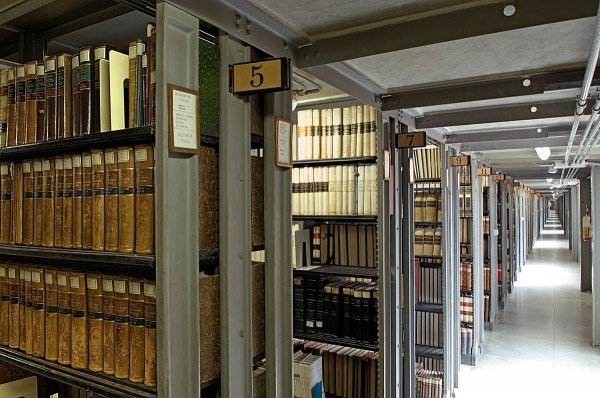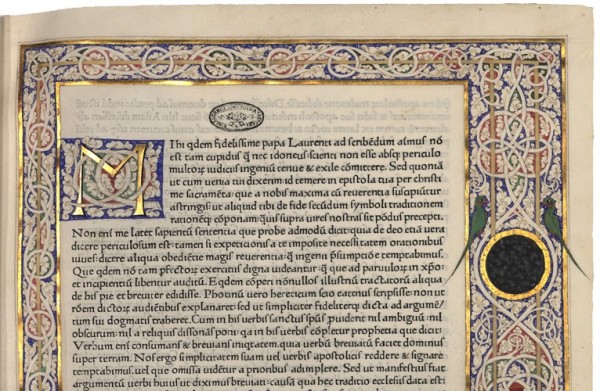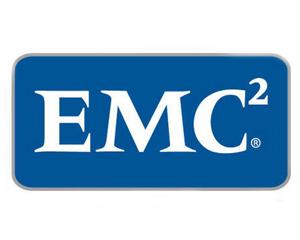[caption id="attachment_8427" align="aligncenter" width="600"]

The Vatican hosts a lot of manuscripts, to say the least.[/caption] Like manna from heaven, EMC has rained storage capacity down upon the Vatican, so the latter can digitize its collected works. And it was good. The ultimate goal is to digitize the Vatican's collection of historic manuscripts and incunabula (a book or pamphlet printed before 1501) within the Vatican Apostolic Library. Although the Library will presumably leave the originals available for Dan Brown-like scrutiny, the majority of study, research, and general interest inquiries will likely be satisfied through digital copies of the documents, which can be served up on the Web. EMC said it will provide 2.8 petabytes of storage capacity—enough to store 40 million pages of digitized manuscripts—across a collection of its storage offerings: EMC Isilon scale-out NAS, EMC Atmos object storage, EMC Data Domain and EMC NetWorker backup and recovery solutions, and EMC VNX unified storage solutions. EMC's work with the Vatican is part of what the company calls the
Information Heritage Initiative—good publicity for EMC, which has donated storage to the Herzogin Anna Amalia Library in Weimar, Germany (to digitize da Vinci's "Codex of Flight" in 3D) plus the JFK Library in Boston. The storage giant has also previously worked with the Vatican to digitize 100 other historical documents from its "secret archives," presumably as a trial to see whether or not the partnership would work. “The Apostolic Library contains some of the oldest texts in the world that represent a priceless legacy of history and culture," Monsignor Cesare Pasini, Prefect of the Vatican Apostolic Library, wrote in a statement. “It's very important that these documents are protected, and at the same time made available to scholars around the world. Thanks to the generosity and expertise of supporters such as EMC we are able to meet these goals, preserving a treasure-trove of rare and unique texts in a format that will not suffer from the passage of time.” Some of the documents that are being digitized include The Sifra, one of the oldest Hebrew codes, written between the end of the 9th Century and the middle of the 10th; Greek testimonies of the works of Homer, Sophocles, Plato and Hippocrates; the incunabulum of Pius II's De Europa, printed by Albrecht Kunne in Memmingen in around 1491; and the Code-B, one of the oldest extant manuscripts of the Greek Bible, dated to the 4th Century. The Vatican hasn't said if it will make the works publicly accessible, or whether it will attach compute resources to the project for additional study. If nothing else, it could make the next movie based off a Dan Brown book that much more boring—instead of running from church to chapel to statue, his heroes will be simply clicking links.
 Images: The Vatican
Images: The Vatican  The Vatican hosts a lot of manuscripts, to say the least.[/caption] Like manna from heaven, EMC has rained storage capacity down upon the Vatican, so the latter can digitize its collected works. And it was good. The ultimate goal is to digitize the Vatican's collection of historic manuscripts and incunabula (a book or pamphlet printed before 1501) within the Vatican Apostolic Library. Although the Library will presumably leave the originals available for Dan Brown-like scrutiny, the majority of study, research, and general interest inquiries will likely be satisfied through digital copies of the documents, which can be served up on the Web. EMC said it will provide 2.8 petabytes of storage capacity—enough to store 40 million pages of digitized manuscripts—across a collection of its storage offerings: EMC Isilon scale-out NAS, EMC Atmos object storage, EMC Data Domain and EMC NetWorker backup and recovery solutions, and EMC VNX unified storage solutions. EMC's work with the Vatican is part of what the company calls the Information Heritage Initiative—good publicity for EMC, which has donated storage to the Herzogin Anna Amalia Library in Weimar, Germany (to digitize da Vinci's "Codex of Flight" in 3D) plus the JFK Library in Boston. The storage giant has also previously worked with the Vatican to digitize 100 other historical documents from its "secret archives," presumably as a trial to see whether or not the partnership would work. “The Apostolic Library contains some of the oldest texts in the world that represent a priceless legacy of history and culture," Monsignor Cesare Pasini, Prefect of the Vatican Apostolic Library, wrote in a statement. “It's very important that these documents are protected, and at the same time made available to scholars around the world. Thanks to the generosity and expertise of supporters such as EMC we are able to meet these goals, preserving a treasure-trove of rare and unique texts in a format that will not suffer from the passage of time.” Some of the documents that are being digitized include The Sifra, one of the oldest Hebrew codes, written between the end of the 9th Century and the middle of the 10th; Greek testimonies of the works of Homer, Sophocles, Plato and Hippocrates; the incunabulum of Pius II's De Europa, printed by Albrecht Kunne in Memmingen in around 1491; and the Code-B, one of the oldest extant manuscripts of the Greek Bible, dated to the 4th Century. The Vatican hasn't said if it will make the works publicly accessible, or whether it will attach compute resources to the project for additional study. If nothing else, it could make the next movie based off a Dan Brown book that much more boring—instead of running from church to chapel to statue, his heroes will be simply clicking links.
The Vatican hosts a lot of manuscripts, to say the least.[/caption] Like manna from heaven, EMC has rained storage capacity down upon the Vatican, so the latter can digitize its collected works. And it was good. The ultimate goal is to digitize the Vatican's collection of historic manuscripts and incunabula (a book or pamphlet printed before 1501) within the Vatican Apostolic Library. Although the Library will presumably leave the originals available for Dan Brown-like scrutiny, the majority of study, research, and general interest inquiries will likely be satisfied through digital copies of the documents, which can be served up on the Web. EMC said it will provide 2.8 petabytes of storage capacity—enough to store 40 million pages of digitized manuscripts—across a collection of its storage offerings: EMC Isilon scale-out NAS, EMC Atmos object storage, EMC Data Domain and EMC NetWorker backup and recovery solutions, and EMC VNX unified storage solutions. EMC's work with the Vatican is part of what the company calls the Information Heritage Initiative—good publicity for EMC, which has donated storage to the Herzogin Anna Amalia Library in Weimar, Germany (to digitize da Vinci's "Codex of Flight" in 3D) plus the JFK Library in Boston. The storage giant has also previously worked with the Vatican to digitize 100 other historical documents from its "secret archives," presumably as a trial to see whether or not the partnership would work. “The Apostolic Library contains some of the oldest texts in the world that represent a priceless legacy of history and culture," Monsignor Cesare Pasini, Prefect of the Vatican Apostolic Library, wrote in a statement. “It's very important that these documents are protected, and at the same time made available to scholars around the world. Thanks to the generosity and expertise of supporters such as EMC we are able to meet these goals, preserving a treasure-trove of rare and unique texts in a format that will not suffer from the passage of time.” Some of the documents that are being digitized include The Sifra, one of the oldest Hebrew codes, written between the end of the 9th Century and the middle of the 10th; Greek testimonies of the works of Homer, Sophocles, Plato and Hippocrates; the incunabulum of Pius II's De Europa, printed by Albrecht Kunne in Memmingen in around 1491; and the Code-B, one of the oldest extant manuscripts of the Greek Bible, dated to the 4th Century. The Vatican hasn't said if it will make the works publicly accessible, or whether it will attach compute resources to the project for additional study. If nothing else, it could make the next movie based off a Dan Brown book that much more boring—instead of running from church to chapel to statue, his heroes will be simply clicking links.  Images: The Vatican
Images: The Vatican 